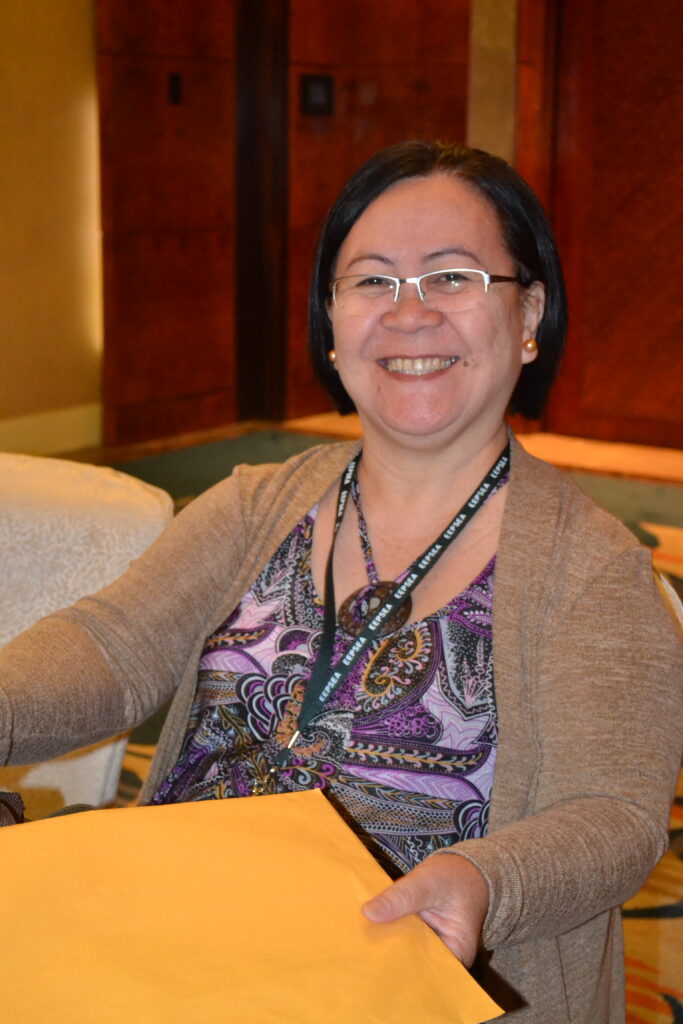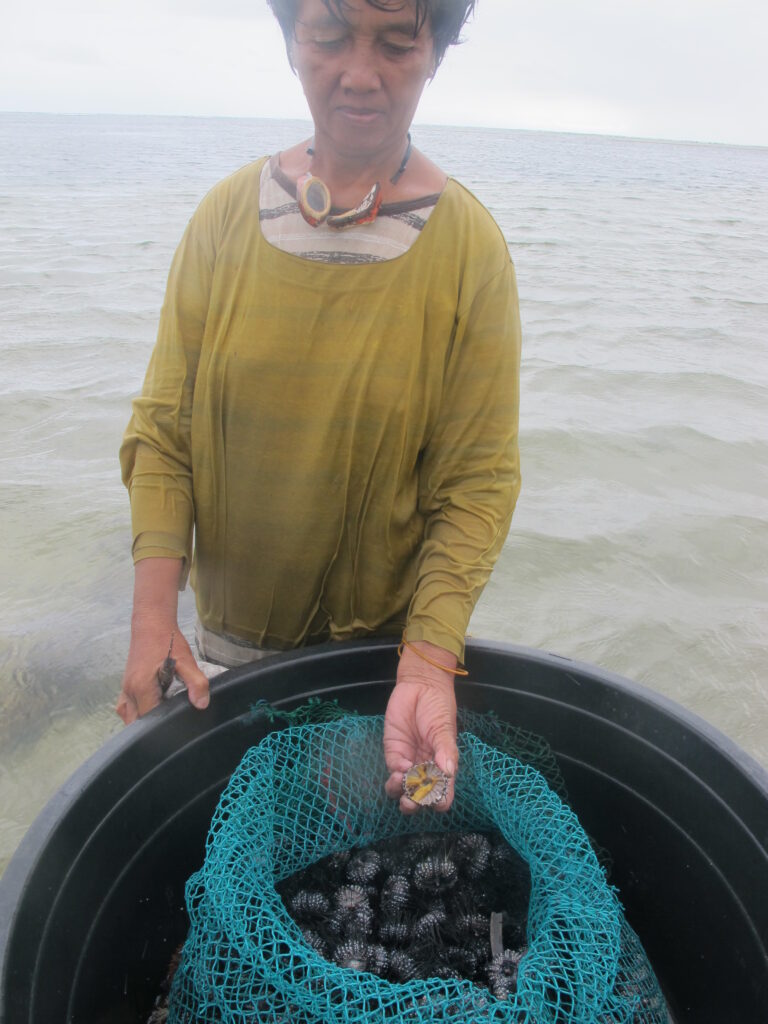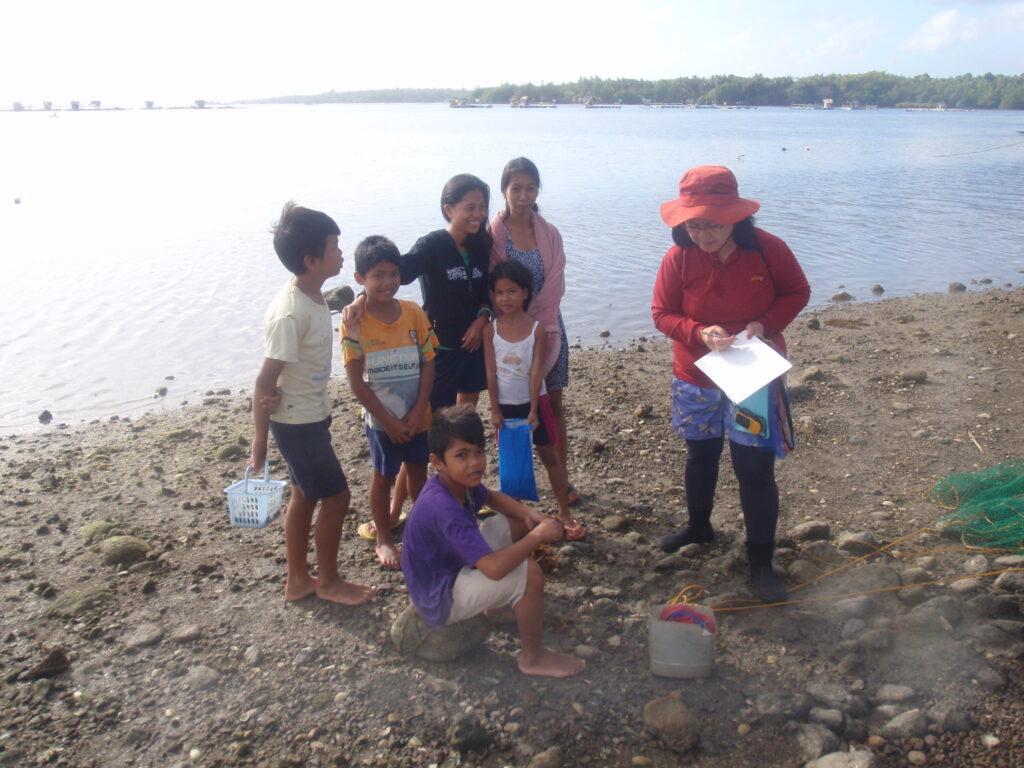By Henrylito D. Tacio
Reef gleaning – known as “panginhas” in the Cebuano dialect while Tagalog-speaking people call it “pamumulot” – is how experts called that fishing method that is done in shallow coastal, estuarine, and freshwaters waters or in habitats exposed during low tide.
“Gleaning for edible seafood on shallow reef flats during low tides is an important form of subsistence fisheries in the Philippines,” reports a policy brief published by the Economy and Environment Program for Southeast Asia (EEPSEA) and distributed during an annual conference held in Manila some years back.
“Subsistence fisheries” is a form of artisanal fishing mainly for household consumption or that which earns very little income from selling a portion of the catch. It has been observed that reef gleaning for snails, shells, sea cucumbers, sea urchins, seaweed, and fish is “the only form of subsistence fishing in the Philippines.”
Reef gleaning has been practiced in coastal communities in the Philippines for a long time. You better ask Carolina Pading, who lives in Tubajon, a coastal barangay in Laguindingan, Misamis Oriental. She has been gleaning for about 43 years now. In recent years, she collects mostly sea cucumbers, which are common in the area.
Carolina cuts them into small pieces and mixes them with onions, chili, and vinegar, then sells these in her neighborhood and the public market for P20 per glass. On a very productive day, she is able to make 60 glasses of pickled sea cucumbers and earn as much as P1,200! However, on an average day, she earns an income of P500, which is higher than most gleaners usually get.
Adela Llaneta is a 60-year-old grandmother who lives not far from where Carolina lives. She’s not alone since her three grandchildren, who were left by their parents for her to take care of, are living with her.
To support her grandchildren’s school needs and pocket money, she has to gather sea urchins at the intertidal area during low tide every day. She’s been doing this for two years now. Despite her age, she still manages to harvest the spiny globular marine creatures. Her daily average income is P245.

Dr. Asuncion B. De Guzman (Photo by Henrylito D. Tacio) 
Carolina Pading (courtesy of Dr. Asuncion B. de Guzman)
Carolina and Adela were just two of the many respondents asked by a group of researchers composed of Asuncion B. De Guzman, Zenaida M. Sumalde, Mariel Denerie B. Colance, Mierra Flor V. Ponce, and Gemlyn Mar S. Rance. The EEPSEA funded the study entitled “Economics of Reef Gleaning in the Philippines: Impacts on the Coastal Environment, Household Economy and Nutrition.”
Although reef gleaning is widespread in the country, the study was conducted mostly in four popular reef gleaning areas in Mindanao: Laguindingan, Misamis Oriental; Kauswagan, Lanao del Norte; Lopez Jaena, Misamis Occidental; and Cortes, Surigao del Sur. Only one area in the Visayas (Tubigon, Bohol) was included.
“As yields from artisanal gear-based fisheries continue to decline, coastal residents become increasingly dependent on gathering of invertebrates and seaweed to supplement family incomes and put food on the table,” the policy brief said.
Fish, touted to be the “poor man’s source of protein,” is a staple food of Filipinos. “Fish and seafood represent an important source of protein for the average Filipino, at around 41%of animal protein intake,” reports the Kuala Lumpur-based World Fish Center.
But the sad news is that fish caught in the open seas is getting smaller and scarce. In the past, Filipino fishers used to catch 20 kilograms of fish each day. But today, they could manage to catch only around 4.76 kilograms a day – “barely a fourth of the amount during the good old days,” said a Rappler report.
Women and children used to be the traditional reef gleaners. But due to declining fish catch in areas where they used to fish and lack of viable employment, men are now joining the bandwagon.
“The increased male participation is perceived to be a consequence of declining catch from artisanal finfish fisheries or lack of viable employment or livelihood,” the policy brief surmised.
Regardless of gender, women often invest more effort (in terms of hours) and obtain higher catch-per-unit-effort (CPUE). In some places, children also have increased participation in reef gleaning activities, spurred on by their parents in order to earn a little more to support their education.

Here are more highlights from the study:
· Depending on the target species, practices in gathering edible invertebrates from reef flats range from simple handpicking to using minor implements (that is, scoop nets, knives, digging sticks, and rakes).
· More than 80% of the gleaners’ daily catch consists of gastropods, bivalves, and sea urchins, while sea cucumbers and fish are quite rare. Due to lack of regulation, bivalves and sea cucumbers are collected even if they are still small or juveniles.
· Spending an average of 2.3 hours each day, gleaners obtain a CPUE of 0.8 to 2.12 kilograms per gleaner per hour, which amounts to a daily CPUE of 2.46 to 5.85 kilograms.
· Across the five studied sites, the average monthly income of gleaning households from all sources is estimated at P6,170 – which is lower than the national poverty threshold of P7,821 per month.
“Revenue from gleaning barely makes a dent in the economy of the average coastal household in most areas,” the paper pointed out. The reason: only 17% sell their entire catch while 31% consume it. As a result, the estimated daily gross revenues derived from 2-5 hours of gleaning was low: P26-P92 per gleaner per day. This sums up to a monthly income of the only P883, thus contributing very little – about 15% – to the household economy.
Many gleaners report that what they earn from selling their catch was barely enough to buy a few kilos of rice each day. “Results indicate that family income falls below the national poverty and subsistence thresholds, evidence that Filipino small-scale fishers remain the poorest of the poor,” the study said.
In terms of nutrition intake, it was found that coastal communities have high energy (86.6%) and protein (85.9%) sufficiency levels, using the food composition level published by the Philippine Food and Nutrition Research Institute.
“Seafood contributes 7.3% to energy intake and 33.9% to protein intake of the average coastal household,” the study pinpointed. “Much of the seafood eaten by coastal communities consists of invertebrates obtained from gleaning, which contribute 30.6% and 24.7% of the energy and protein intake, respectively.”
On top of this, the study also highlights those specific methods of gleaning are destructive. Among those that have been identified as potentially damaging to the environment were the overturning of rocks, the use of large digging blades, and the gathering of tiny or juvenile sea urchins and sea cucumbers.
“Most gleaners don’t consider their gleaning practices destructive to the reef environment while few admit that digging for bivalves can accidentally uproot seagrass and that reef trampling can destroy corals and other animals sheltering in seagrass beds,” notes Dr. De Guzman, leader of the study.
If left untreated, the study said the above practices “will threaten the natural resilience of these shallow, easily accessible resources, which are virtually unprotected by any statute and management intervention.”
The study also recommended some policies that would manage and regulate reef gleaning. These are registration and licensing of all resident gleaners, limitation on the harvestable size for target species, prohibition of destructive methods of gathering, and establishing a coastal zone plan that identifies areas for gleaning and “no entry” zones.
The development of a viable alternative livelihood for coastal communities, preferably non-fishery based, is needed in order to enhance supplemental income and help alleviate gleaning households from poverty.
“Species inventory and catch assessment of gleaning should also be integrated into the fisheries monitoring program of local government units, the Bureau of Fisheries and Aquatic Resources and academic institutions,” concluded Dr. De Guzman, who is now with the Gaia Resource and Environmental Consultancy Services.

